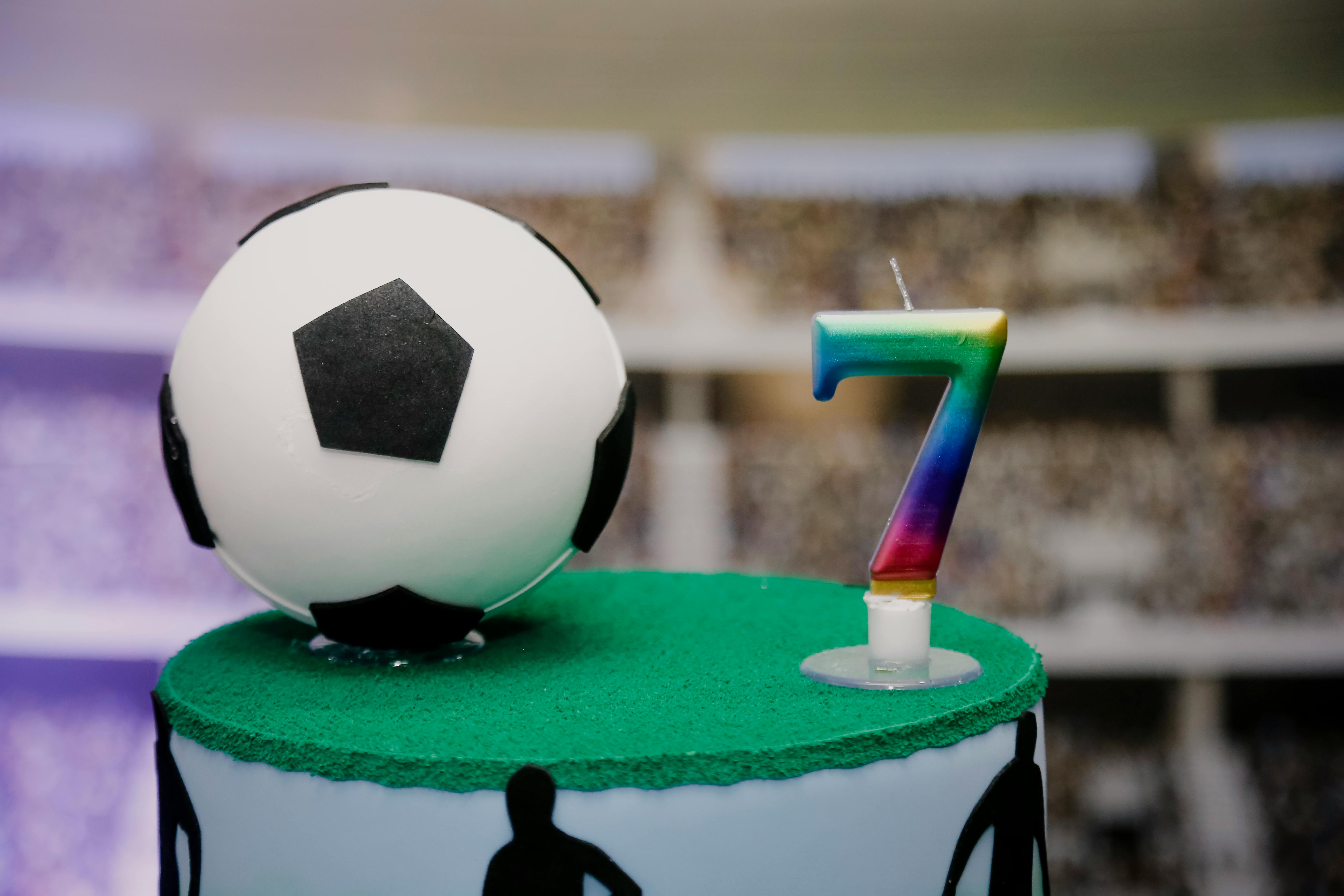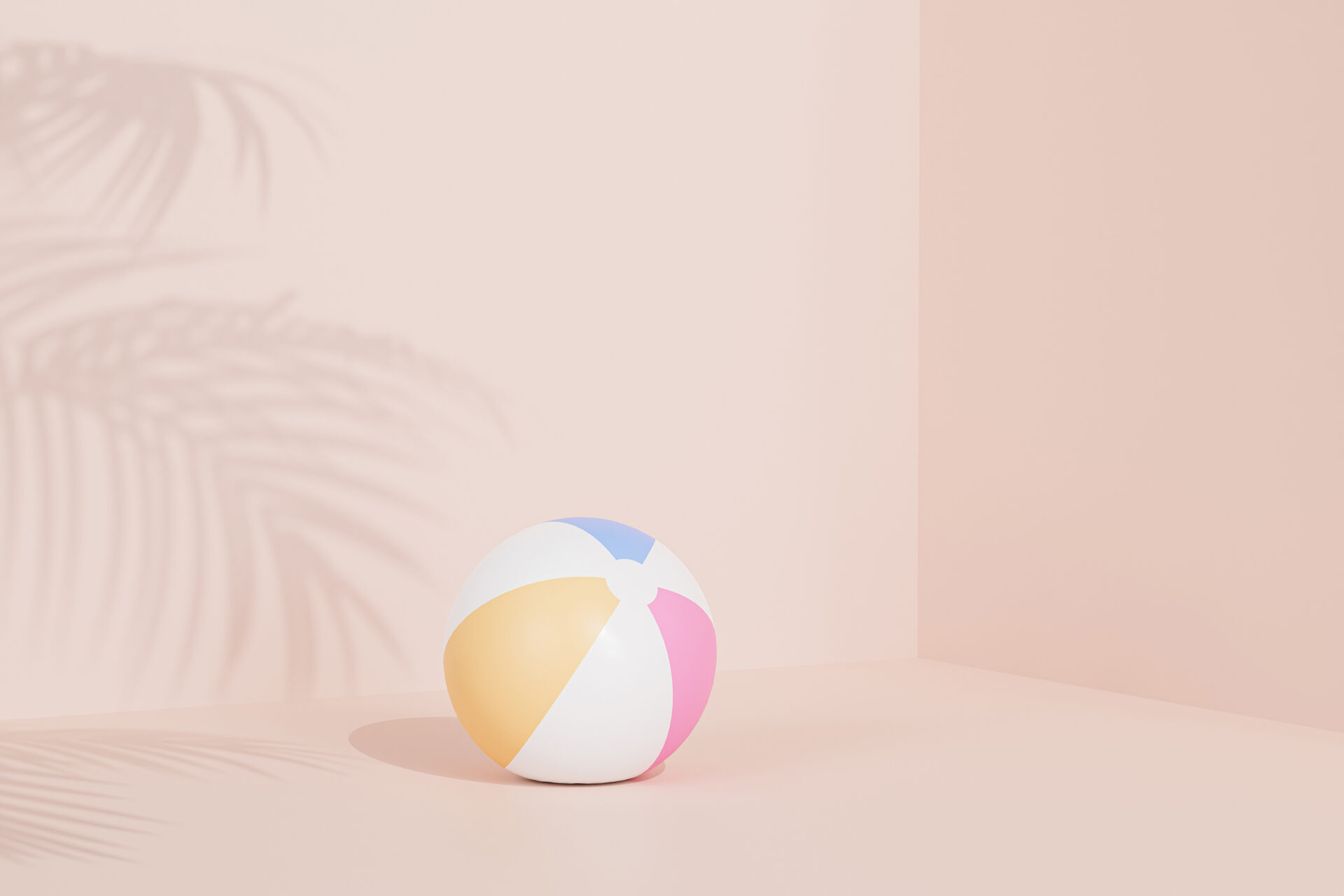A soccer ball is a spherical object used in the sport of soccer. It is typically made of leather or other materials that are stitched together and filled with air. The circumference of the ball can vary depending on the age and skill level of the players, but it must be between 68-70 cm. It is usually white with black pentagonal and hexagonal patterns to aid in visibility for players.A soccer ball is shaped like a sphere.
Dimensions of a Soccer Ball
A soccer ball is typically a sphere with a circumference of 68–70 cm (27–28 in) and a weight of 410–450 g (14–16 oz). The material used to make the ball is usually synthetic leather or rubber. The panels on a soccer ball are usually 20, made of either synthetic leather, rubber, or a combination. Many soccer balls feature 32-panel construction, which is the most popular panel configuration for professional and recreational leagues. Each panel is stitched together to provide improved durability and touch on the ball. The inner bladder of the ball is usually made from latex or butyl rubber. It helps maintain the shape and air retention in the ball. Soccer balls vary in size for different age groups, with unique sizes ranging from size 3 (for kids under 8) to size 5 (for adults).
In general, most FIFA-approved soccer balls must adhere to certain standards set by FIFA to ensure that players experience quality play with their equipment. FIFA tests all approved balls annually for roundness, weight, water absorption, rebound characteristics, and other properties that are essential for quality play. Additionally, all approved balls must have an official stamp from FIFA that indicates which year it was tested and approved.
Different Types of Soccer Balls and Their Shapes
Soccer balls come in a variety of shapes and sizes depending on the type of game, age group, and level of play. The most common type of soccer ball is the standard round ball used in professional matches and college play. This type of ball is made from synthetic leather or PVC material with a rubber bladder to inflate it. Other types of soccer balls include those used in beach soccer, futsal, indoor soccer, street soccer, and mini-soccer. Each one has its own unique shape that makes it suitable for different types of games.
Beach soccer balls are larger than regular balls and have a sandy texture to allow them to move easily on the sand. They are usually made from rubber or synthetic material with a foam core so they can float in water as well as being able to bounce off hard surfaces. Futsal balls are smaller than traditional footballs and feature a low-bounce design for improved control on indoor surfaces. Indoor soccer balls have bright colors for better visibility when playing inside an arena or gymnasium. Street soccer balls are typically designed with a vibrant graphic pattern to make them easier to see when playing outdoors in dimly lit areas. Mini-soccer balls are made from soft materials like foam rubber or PVC so they can be used safely by younger players who may not be able to handle a full-sized ball yet.
No matter what type of game you’re playing or at what level, there is a specific soccer ball designed just for you! Knowing the different types of soccer balls and their shapes can help you find the perfect one for your needs.
How to Choose the Right Size and Shape of Soccer Ball
Choosing the right size and shape of soccer ball is essential for a successful game. The right ball can increase the player’s performance, while an ill-fitting ball can slow down play and lead to poor results. To help you make the right decision, here are a few tips on how to choose the size and shape of your soccer ball.
First, consider the age of the players. Kids usually play with smaller, lighter balls that are easier for them to control. On the other hand, adult players require larger, heavier balls that can be kicked with more power and accuracy. So make sure you choose a size that is suitable for each group of players.
Next, look at the surface on which you will be playing your soccer game. Different surfaces require different types of balls – for example, grass requires a softer ball than artificial turf or hardwood flooring. Matching the type of surface with an appropriate ball will help ensure optimal performance during your game.
Finally, consider the type of soccer game you want to play. For example, if you’re planning on playing a more traditional game with no rules or boundaries, then a regular round-shaped ball may be suitable for your needs. However, if you’re looking for something more competitive such as futsal or beach soccer then an oval-shaped ball may be better suited to your style of play.
By following these simple tips, you’ll be able to choose the right size and shape of soccer ball that will help enhance your performance during your next game!
How to Measure the Circumference of a Soccer Ball
Measuring the circumference of a soccer ball is important for ensuring you are using the correct size ball for your game. Knowing the circumference of a soccer ball will also help you determine if it is the right size for your age group or skill level. It is relatively easy to measure the circumference of a soccer ball, and all you need is a tape measure or ruler. Here’s how to do it:
Start by laying the soccer ball on a flat surface. Place one end of the tape measure or ruler at one end of the soccer ball and extend it around to meet back at that same spot. Make sure that you are holding it in place firmly as you go around.
Once you have gone all the way around, note down this measurement in centimeters or inches, depending on your preference. This is the circumference of your soccer ball. It should be between 63 and 69 centimeters (25 and 27 inches). If it is too small or too large, then you may need to get another size.
Knowing how to measure the circumference of a soccer ball can be very useful when playing organized games, as well as just practicing with friends. By having an accurate measurement, you can make sure that everyone is playing with balls that are appropriate for their skill level and age group.

Understanding the Difference Between Regular and Professional Soccer Balls
The world of soccer is full of different types of balls, each designed for different purposes. When it comes to choosing a soccer ball, it can be difficult to understand the differences between regular and professional soccer balls. In this article, we will discuss the differences between these two types of soccer balls so that you can make an informed decision when selecting the right ball for your needs.
When it comes to regular soccer balls, they are generally made from synthetic materials such as polyurethane or PVC. These materials are lightweight and are designed to provide good shock absorption and control. Regular soccer balls are usually cheaper than professional ones, but they do not last as long and may not perform as well in wet conditions.
Professional soccer balls, on the other hand, are made from high-grade materials such as leather or polymer. These materials provide superior grip and control in wet conditions and last much longer than regular soccer balls. Professional soccer balls also tend to be more expensive than regular ones due to their higher quality construction and materials used.
In terms of performance, professional soccer balls tend to have a higher degree of accuracy, making them ideal for use in competitive play or training sessions. They also have a more consistent bounce which makes them easier to control during games. However, due to their higher quality construction and materials used, professional soccer balls tend to be much heavier than regular ones which can make them difficult for younger players or those with less strength to maneuver easily.
Overall, there is a clear difference between regular and professional soccer balls in terms of both performance and cost. If you are looking for an affordable option that still provides good quality performance in all weather conditions then a regular ball may be best for you. However, if you want a long lasting ball that performs better in wet conditions then you should consider investing in a professional model.
Knowing About the Various Soccer Ball Materials Used
Soccer is a popular sport around the world and there are many different types of soccer balls used in the game. Each type of ball has its own unique characteristics and materials used in its construction. Knowing about the various materials used in soccer balls can help you make the right choice when it comes to purchasing a new ball.
Leather is one of the most commonly used materials for soccer balls. It is a durable material that can withstand a lot of wear and tear, but it does require some maintenance to keep it in good condition. Leather soccer balls are usually more expensive than other types of balls, but they are also known for their superior quality and performance on the field.
Synthetic leather is another popular material used to construct soccer balls. It is much cheaper than leather, but it also does not provide as much durability as leather does. Synthetic leather soccer balls are usually lighter than leather ones and they tend to be more resistant to water damage. They are ideal for use in wet conditions, such as rain or snow, as they will not absorb water like leather can.
Thermoplastic polyurethane (TPU) is a material that is becoming increasingly popular in the construction of soccer balls due to its lightweight properties and superior durability compared to other materials. TPU can be used to create an outer layer on a soccer ball that helps protect against abrasion, scratches, and other damage during play. In addition, TPU is resistant to moisture and will not absorb water like some other materials can, so it will remain at an optimal level for longer periods of time during play.
Rubber is another popular material used in soccer ball construction due to its ability to absorb shock and provide cushioning during play. Rubber also provides excellent grip on the ball when dribbling or passing, making it easier for players to maintain control over their shots or passes during play. Rubber soccer balls are usually cheaper than other materials so they are great for those on a budget who still want quality performance from their equipment.
No matter what type of material you choose for your soccer ball, knowing about each one’s characteristics can help you make an informed decision when purchasing your new ball. You should consider factors such as cost, durability, weight, grip, and resistance when deciding which type of material will best suit your needs on the field.
Exploring Different Designs on Soccer Balls
Soccer balls come in all shapes and sizes, with a variety of designs to choose from. From traditional black and white designs to vibrant, multi-colored balls, there is a design for everyone. There are many factors to consider when choosing a soccer ball design, such as the team colors, the age group of players, the playing surface, and the playing conditions. In addition, it is important to consider the ball’s durability and ease of use.
When looking for a soccer ball design that meets all these criteria, there are several options available. Traditional black and white soccer balls are a classic choice that will never go out of style. They provide good visibility on the pitch and can be used on any type of playing surface. For teams looking for something more colorful, there are plenty of bright designs featuring different colors and patterns to choose from. These designs can also be customized with team logos or other graphics.
For younger age groups or those who play on harder surfaces such as asphalt or concrete, softer soccer balls may be a better option. These softer balls are made from materials like foam or rubber that help absorb impact better than traditional leather or synthetic materials. This makes them easier to control and helps reduce the risk of injury from hard impacts.
Finally, when choosing a soccer ball design it is important to consider what kind of playing conditions it will be used in. For outdoor games in wet weather, heavier duty water-resistant materials may be necessary in order to keep the ball dry during play. On dry fields with little wind, lightweight materials can help make long passes easier to control.
No matter what type of soccer ball design is chosen, it is important to look for quality construction that will last through multiple seasons of play. A well-made soccer ball should hold up well against wear and tear while providing an enjoyable experience for players on the pitch. With so many designs available today, finding one that fits your specific needs should not be difficult!

Conclusion
The soccer ball is a true symbol of the world’s most popular sport. Its round shape has been designed to provide maximum control and stability, making it the ideal ball for playing the game. The unique shape of the soccer ball allows it to be used in a variety of different ways, from competitive match play to recreational fun. Whether you’re a professional player or just kicking around with friends, the soccer ball is an essential piece of equipment.
The shape of a soccer ball is a testament to its lasting appeal, and its perfect form is one that will never go out of style. It’s more than just a piece of sporting equipment; it’s an icon of international camaraderie and competition that unites players from all over the world in their love for the game.




